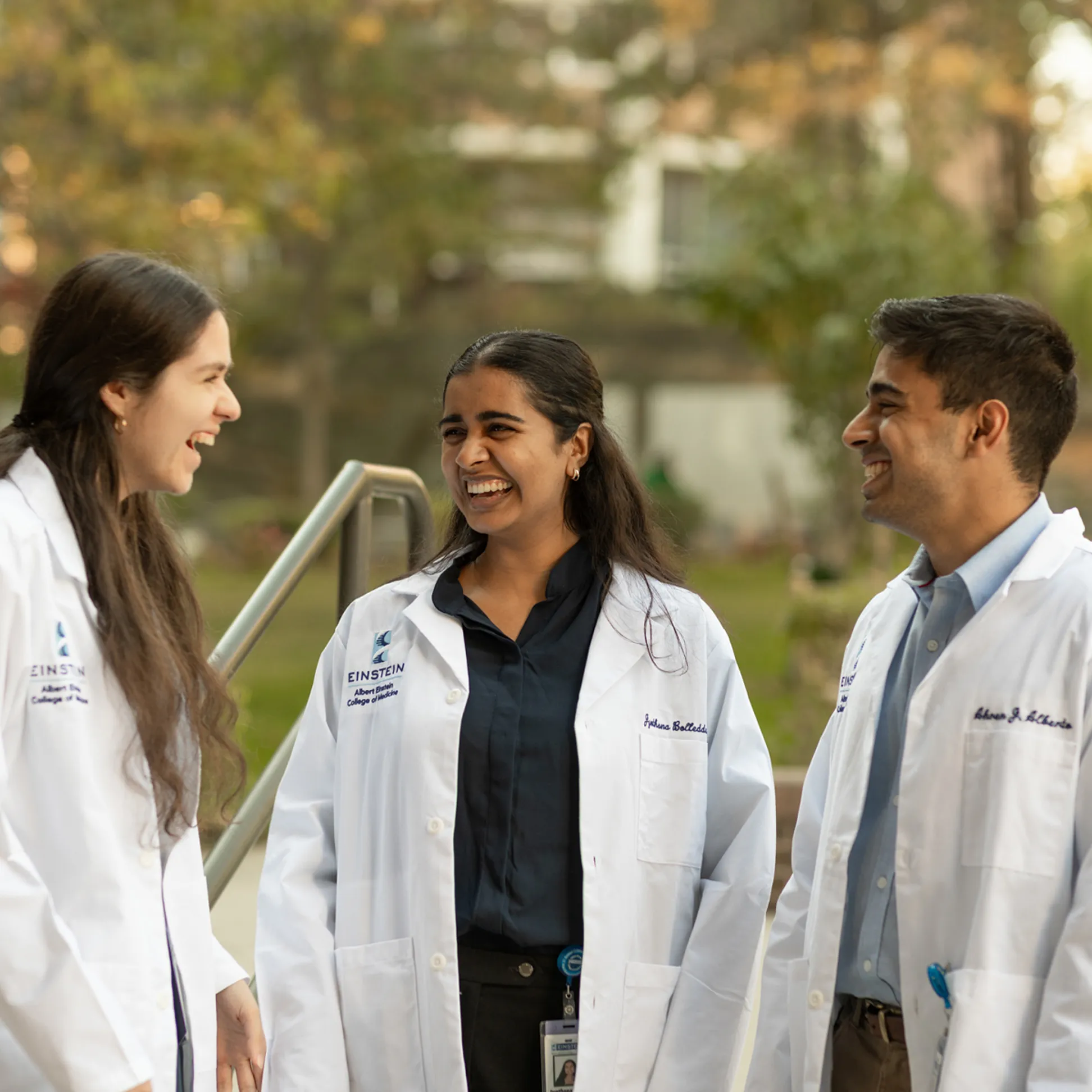Donde la innovación se encuentra con la compasión
Alcanzamos la excelencia científica mediante una educación médica innovadora y una investigación que promueve la participación de la comunidad y mejora el acceso a la atención médica en el Bronx y en otras regiones.
Explorar la educación
Combinamos la atención humanística con la excelencia en la investigación para preparar a estudiantes de medicina y posgrado en ciencias biomédicas para que se conviertan en médicos compasivos e investigadores científicos innovadores. Nos enorgullece brindar a todos los estudiantes de medicina... Beca Ruth L. Gottesman Que cubre el costo de la matrícula. Obtenga más información sobre educación en Einstein.

-
98%
Tasa de coincidencia para estudiantes de medicina en 2025
-
20%
de estudiantes de medicina emparejados con un afiliado de Einstein en 2025
-
1,000+
Estudiantes de doctorado en medicina, doctorado y doctorado en medicina/doctorado en 2025
-
2,000+
Facultad a tiempo completo

Ana María Cuervo, MD, Ph.D., descubridora de la autofagia mediada por chaperonas, en el laboratorio.
Explorar Investigación
En los numerosos departamentos académicos y centros de excelencia de Einstein, incluyendo varios centros de investigación designados por los Institutos Nacionales de la Salud, convertimos los descubrimientos biomédicos en nuevos tratamientos eficaces, lo que permite a los profesionales clínicos brindar una atención compasiva y centrada en el paciente, basada en las últimas investigaciones biomédicas. Obtenga más información sobre la investigación en Einstein .
-
273 M+
financiación total de la investigación en 2024
-
3,211
artículos publicados en 2024
-
20
centros de investigación
-
36
iniciativas globales
La vida en Einstein
Fomentamos una cultura de colaboración y accesibilidad que promueve la innovación en la educación y la investigación biomédica, y promueve la equidad en salud. Más información sobre La vida en Einstein.

Lunes 25 de agosto de 12:00 a 13:00 horas
Price Center/Block Research Pavillion - Auditorio Lefrak (sala 151)
Martes 09 de septiembre de 12:00 a 13:00 horas







